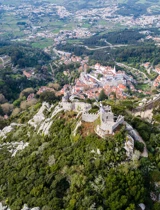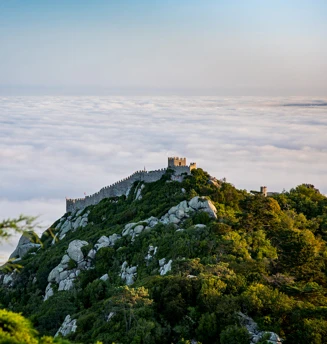
Itinerary
Discover the Historic Centre of Sintra
The Moorish Castle | Vila Sassetii | National Palace of Sintra
This half-day itinerary lets you discover the memories of the people who made Sintra the historic place that it is today. Discover the Arab heritage of this territory, let yourself be carried away by one of the most beautiful walking routes to reach the town of Sintra and discover the last surviving Portuguese medieval palace, a testament to local multiculturalism.
MORNING
This route is planned so that you can enjoy it worry-free. The only thing you have to worry about is making the most of the walk, filling your lungs with pure air and absorbing the countless beauty spots there are to discover. This tour begins with a visit to the Moorish Castle, built around the 10th century on a strong rock massif at one of the highest points on the hill. Due to its lofty position and proximity to the ocean, it served as a watchtower for the defence of the Atlantic coast and maritime access to the city of Lisbon. It has two circles of walls, between which is the ancient Church of São Pedro de Canaferrim.
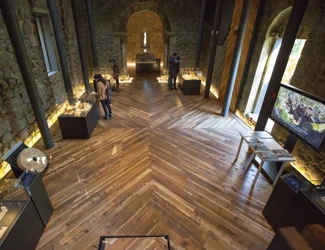
The Moorish Castle Centre of Interpretation
Founded in the 12th century, the Church of São Pedro de Canaferrim functioned as a parish church until the 14th century. Today, it has been converted into the Interpretation Centre of the History of the Castle, where objects collected in archaeological excavations carried out between 2009 and 2013 are on display, through which it is possible to explore the history of the castle.
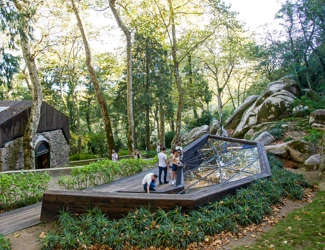
Christian Necropolis
After the conquest by King Afonso Henriques, the old Islamic quarter was destroyed and occupied by the Christian necropolis of the Church of São Pedro de Canaferrim. The archaeological excavation of the cemetery demonstrated that it had remained in use for around 300 years. Numerous Neolithic artefacts were also found at this site, one of the most relevant being a complete vase, from the 5th millennium BCE.
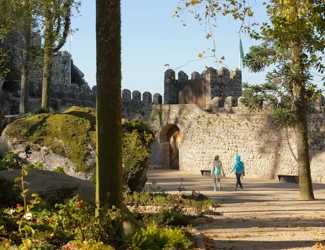
Arms Square
This walled square, open to the sky, was at one time where the military garrison convened. In the 19th century, King Ferdinand II carried out renovations to the castle, transforming it into a romantically-inspired place of contemplation.
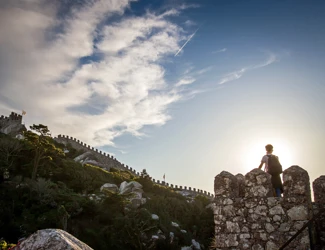
Castle Keep
The Castle Keep was the last stronghold of the fortress and forms part of the citadel. It is located at one of the highest points of the walls and from there you have an expansive vista over the floodplain to the north of the Sintra hills and the Atlantic Ocean.
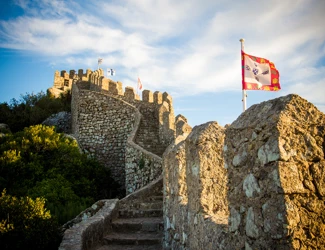
Walls
The various construction phases are visible in the castle walls, showing the alterations that have taken place over time. The sentry walks along the top allow you to contemplate a unique landscape.
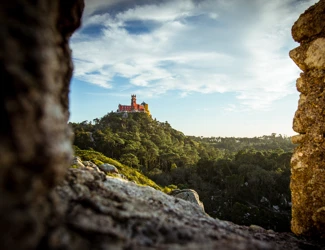
Royal Tower
Located opposite the Castle Keep, the Royal Tower is the highest point on these walls and provides a spectacular view of the Sintra hills and, in particular, the Palace of Pena.
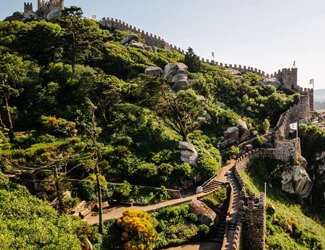
Castle Cafeteria
There is a cafeteria here with a pleasant terrace that invites you to take a break and where you will be served a reinvigorating coffee. This way you can gather your strength to begin a beautiful walk.
Walk
Now begins the descent to the Historic Centre of Sintra, along the Villa Sassetti pedestrian trail.
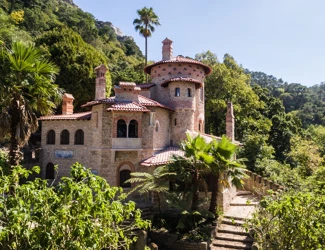
Vila Sassetti
With a winding route, the path through the garden invites a leisurely pace and the contemplation of nature, on a walk through a forest of chestnut and oak trees permeated by streams of water and natural rocks. Architecture and landscaping merge harmoniously in this garden, designed by scenographer Luigi Manini (1848-1936), and the exotic nature of the vegetation, the water features and the contrasts of light and shadow endow it with a strongly theatrical flair. The house, located halfway down the hill, was created as a summer retreat for Victor Carlos Sassetti (1851-1915), the owner of the legendary Hotel Braganza in Lisbon, and the Hotel Victor in Sintra. Also designed by Luigi Manini, it is inspired by the castles of northern Italy, where the architect and the Sassetti family were originally from.
Visit to the Monument
The itinerary ends with a visit to the National Palace of Sintra, the oldest palace in Portugal, which has spanned the entire history of the country.
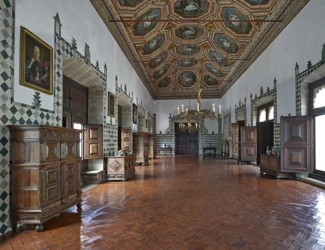
Swans Hall
This is the largest room in the palace, where the most important functions were held, such as ambassadorial receptions, banquets and celebrations. It is named after the white swans that decorate its ceiling.
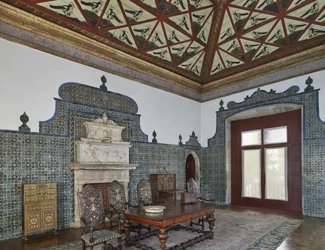
Magpies Room
The name of this room is explained by the 136 magpies painted on the ceiling. The birds hold the banner of King João I in their beaks, and in their claws grasp a rose that may refer to the House of Lancaster, the house of Queen Philippa, his wife.
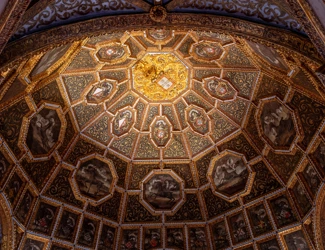
Heraldic Hall
Located in the highest part of the Palace, the Heraldic Hall is the finest example in the building of Manueline intervention and the most important heraldry room in Europe.
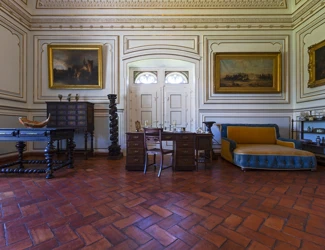
Queen Maria Pia’s Royal Chambers
Located on the upper floor of the east wing of the palace, these chambers were used as a summer residence by Queen Maria Pia of Savoy (1847-1911), the last queen to live in this palace.
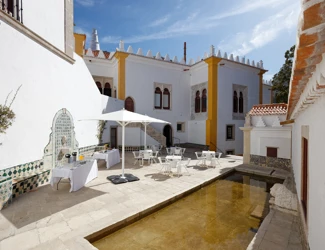
Gardens and the Lion’s Patio
On the Lion's Patio you will find a cafeteria with a pleasant terrace where you can have a comforting meal. Afterwards, you can explore the gardens of the National Palace of Sintra. The Preta Garden, named after the singular relief figure of a black woman that decorates it, has recently been restored.
(At certain times of the year, the cafeteria service may be closed. Please see the page dedicated to cafeterias and restaurants for more information.)
Important information
Buy multiple tickets at once and enjoy a discount.
Buy Tickets



